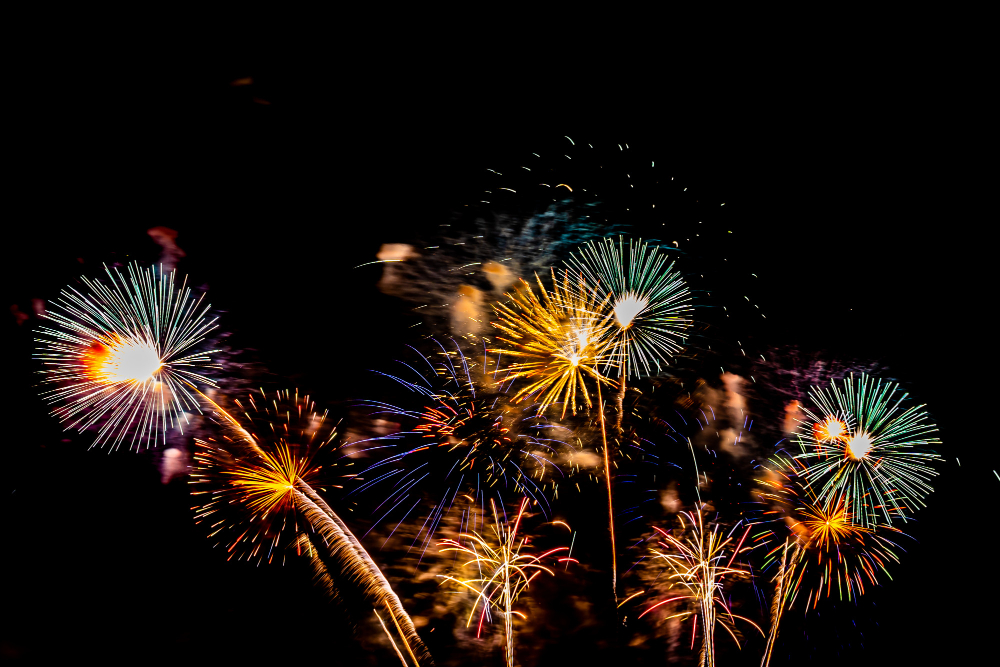Fireworks are a staple of celebrations worldwide, from New Year’s Eve to Bonfire Night. While the visual spectacle of vibrant colours lighting up the night sky is undoubtedly captivating, the accompanying sounds play an equally crucial role in creating a memorable experience. The crackles, whistles, and booms of fireworks evoke emotions and set the atmosphere for festivities. But have you ever wondered what causes these distinct sounds?
Understanding the science behind the sounds of fireworks can enhance your appreciation for these explosive displays. Fireworks produce sound through a combination of chemical reactions and physical processes. The noise generated can vary significantly based on the materials used and the design of the firework itself. For instance, the type of gunpowder, the size of the shell, and the way the firework is constructed all contribute to the unique auditory experience.
To delve deeper into the specifics, it’s essential to explore why some fireworks crackle or whistle. The crackling sound often comes from the combustion of small particles within the firework, while whistling is typically produced by the rapid expulsion of gas through a narrow opening. These sounds are not just random; they are carefully designed to create a specific auditory effect that complements the visual display. For a more detailed exploration of this topic, you can check out this insightful article on why some fireworks crackle or whistle.
The Role of Sound in Fireworks Displays
Creating Atmosphere
The sounds of fireworks contribute significantly to the overall atmosphere of an event. A loud bang can elicit gasps and cheers from the crowd, while a soft crackle can create a sense of wonder and anticipation. The interplay between sound and sight is what makes fireworks displays so enchanting.
Emotional Connection
Sound has a profound impact on our emotions. The booming of fireworks can evoke feelings of excitement and joy, while the softer sounds can instil a sense of nostalgia. This emotional connection is often what keeps people returning to fireworks displays year after year.
Cultural Significance
In many cultures, fireworks are synonymous with celebration. The sounds associated with fireworks can carry cultural meanings, often linked to traditions and rituals. For example, in some cultures, the loud noises are believed to ward off evil spirits, while in others, they signify the arrival of good fortune.
The Science Behind Firework Sounds
Chemical Reactions
At the heart of every firework is a carefully crafted mixture of chemicals. When ignited, these chemicals undergo rapid combustion, producing gases that expand quickly. This expansion creates pressure waves, which we perceive as sound. The specific combination of chemicals used in a firework determines the pitch and volume of the sound produced.
Design Elements
The design of a firework also plays a crucial role in the sounds it produces. For instance, the size of the shell can affect how sound travels. Larger shells tend to produce deeper, more resonant sounds, while smaller shells may create higher-pitched noises. Additionally, the presence of specific materials, such as metal salts, can influence the sound.
The Role of Fuses
Fuses are another critical component in the sound production of fireworks. The type of fuse used can affect the timing and intensity of the explosion, which in turn influences the sound. A slow-burning fuse may create a more prolonged sound, while a quick fuse can lead to a sharp, immediate bang.
The Impact of Sound on Audience Experience
Synchronisation with Music
In modern fireworks displays, sound is often synchronised with music to create a more immersive experience. This combination of visual and auditory elements can heighten the emotional impact of the display. The rhythm of the fireworks can match the tempo of the music, creating a harmonious blend that captivates the audience.
Audience Engagement
The sounds of fireworks can also engage the audience in unique ways. The anticipation of a loud bang or the thrill of a sudden whistle can keep spectators on the edge of their seats. This engagement is particularly important for large public displays, where the collective experience of sound can enhance the sense of community among viewers.
Safety Considerations
While the sounds of fireworks are often celebrated, it’s essential to consider safety. Loud noises can be distressing for some individuals, particularly those with sensory sensitivities or PTSD. Event organisers should be mindful of this and consider providing information about the sounds that will be present during a display.
Conclusion
The sounds of fireworks are an integral part of their charm and allure. From the crackles and whistles to the booming explosions, each sound contributes to the overall experience of a fireworks display. Understanding the science behind these sounds can deepen our appreciation for the artistry involved in creating such spectacular events.
As you prepare for your next fireworks display, take a moment to listen closely. Notice how the sounds interact with the visuals and how they shape your emotional response. Whether you’re celebrating a holiday, a wedding, or simply enjoying a summer night, the symphony of sounds that accompanies fireworks is a reminder of the joy and wonder that these displays bring to our lives.

